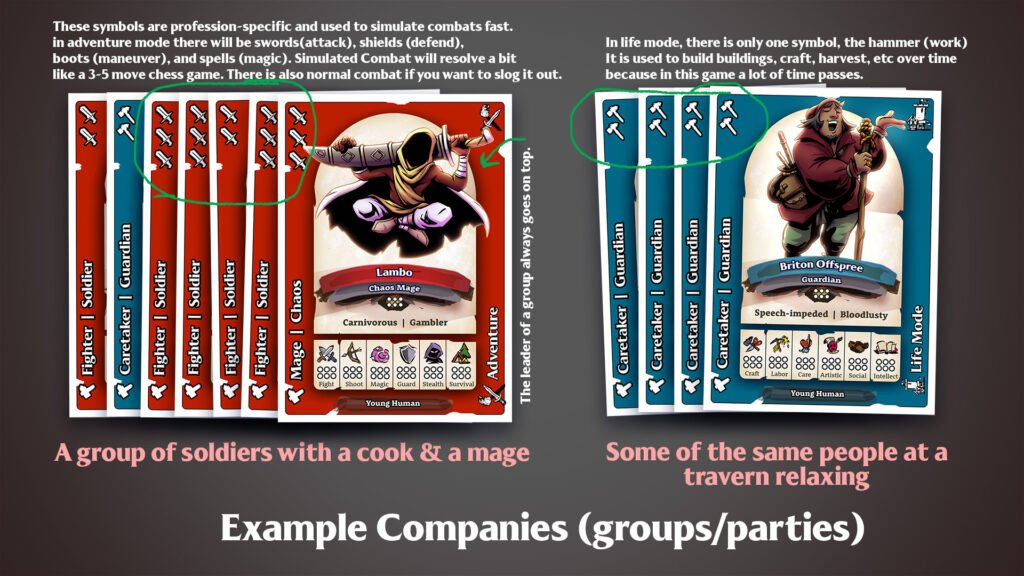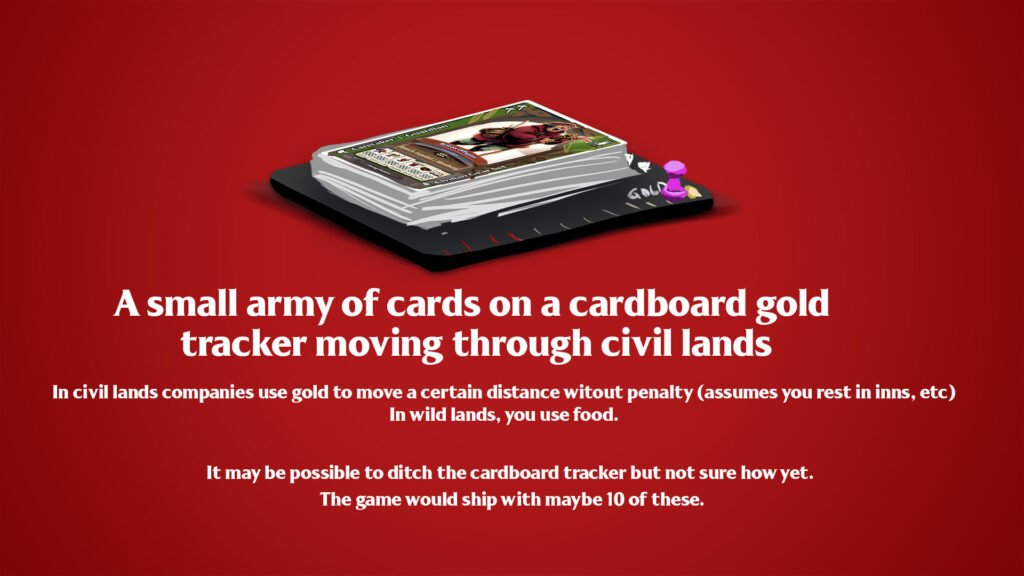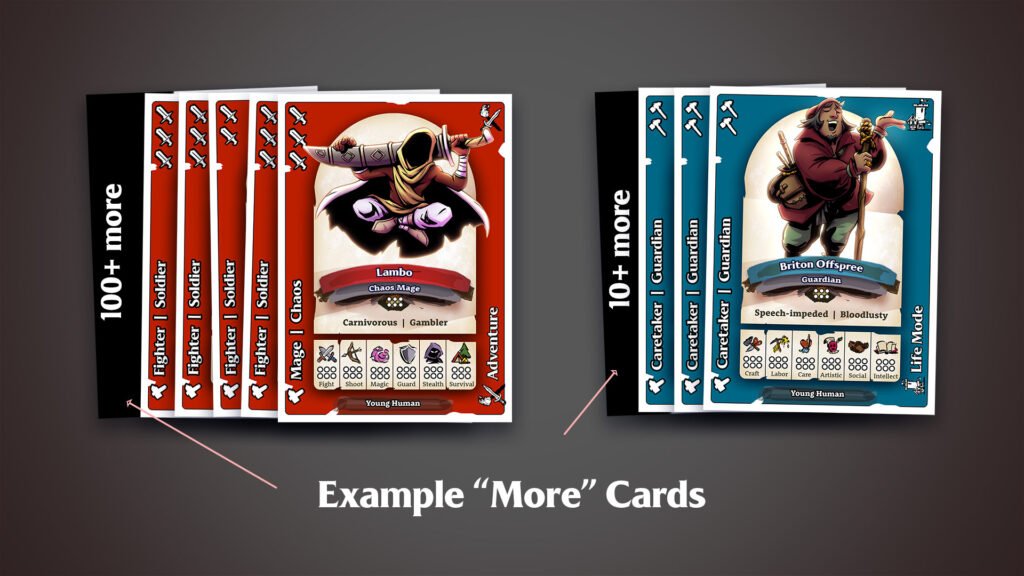You can play up to six characters at a time in Super Maps & Legends, chosen from anyone you meet in the game world. This means you dive into the game and instantly start role-playing within minutes. It’s called Stewarding and your characters are called Wards. Prior to becoming wards, characters are known as Gens, short for Generated Characters. I will talk more about this aspect of the game at a later date. But now that you know that there will be a ton of PCs at the game table let’s talk about how that gets managed.
A World With (*maybe someday) 10,000 NPCs
My original mantra for the game was “10,000 NPCs or I’m a Bearded Gnome!” I wanted an insanely massive sandbox to explore. Although reality may prevent me from hitting that goal, the goal hasn’t changed: make massive amounts of characters and make it fun for players and easy for GMs. Super Maps & Legends will eventually have far more NPCs than Baldur’s Gate 3 or any other role-playing game that I’m aware of (well, Forgotten Realms if taken as a single campaign setting built over decades might still beat us out). SuperMNL will likely ship with between 150-300 NPCs, and we only have to get to 600 to pass Baldur’s Gate 3 which is heralded as one of the biggest and richest RPG experiences ever. A year or two of expansion sets and we should hit that goal, at the least!

Managing An Entire Faction of PCs and a Massive World of NPCs
The above image shows two Companies (or groups) of characters in a Summary Spread. At any given time, there may be 3-6 of these companies within observation of your PCs inside a city or out traveling. Any player could pick up these cards to review them in greater detail, but players cannot flip the cards over to look at the back unless they do something to merit having that information.
Stacks of Cards
When a Company as more than 7 cards in it, or when the Summary Spread above is not required, you can just stack the cards together, always leaving the leader of the stack face-up on top. These card stacks get placed in various rooms at your base (like a worker placement game) for civilian life, or on pieces of cardboard slightly larger than the cards when traveling or on adventure. The cardboard will have a marker for measuring gold in civil lands or food in wild lands.

How to Manage Large Groups with “More” Cards
SuperMNL is not designed to represent EVERY character in your game world. Rather, it’s designed to make “normal” fantasy life as interesting as adventuring life, by giving you a bit more depth in mundane interactions and empowering the GM to improv more easily. There’s no point in having a massive unwieldy stack of 1000 soldiers if the vast majority of them will never be seen or talked to. The goal is to EXPAND your fantasy world from the norm in RPGs by a factor of one or two, not a factor of ten. If normally a city has 10 NPCs in it, now it has 30. If a bar normally has 4 NPCs, now it has 12.
To facilitate the “hand waving” away of unimportant data, the game will have “More” cards for large groups.

But how does a Player manage 6+ PCs at a time?
Easy. You don’t manage them all at once. You divide them up. The game’s basic premise of “Home & Away” promotes this. Some of your characters will be out “on adventure” while others will be back at home working and living life. In addition, characters are simplified into bite-size cards. Thus, six characters is only one hand of cards when compared to any other card game. More than manageable.
Stewardship Rules
In addition, three base “Stewardship Rule” force players to divide up their characters:
- Cosmic forces require a Steward (a player) to not leave the geographic landmark (city-sized area) where their fellow steward are located. This forces any group of wards to have at least one ward from each Steward in it in order for Stewards to be able to teleport between groups. Speaking of teleporting…
- Stewards can teleport to any of their Wards anywhere in the world, but they have to teleport together because of rule #1. This one is pretty straight forward
- If a Steward’s last ward in a company dies, the Steward has one day to find a new ward or lose all Stewardship powers. I haven’t play tested this rule but it sounds straightforward enough in populated areas, and certainly interesting in rural, wild places, or dungeons. With a GM’s help this should be an easy enough rule to follow.
These rules help to create a game that is both playable and somewhat makes sense on a mythological scale.

